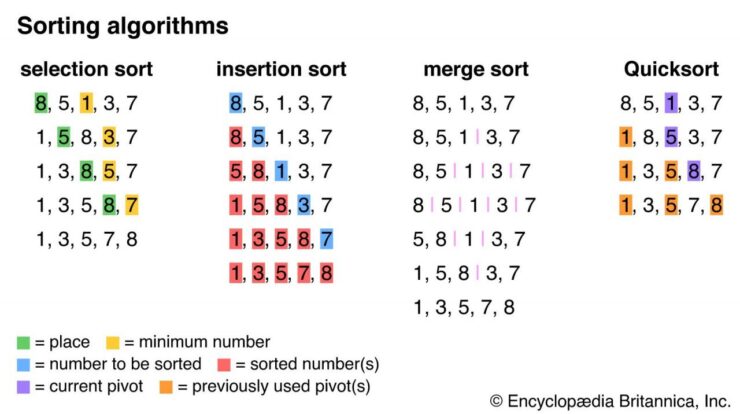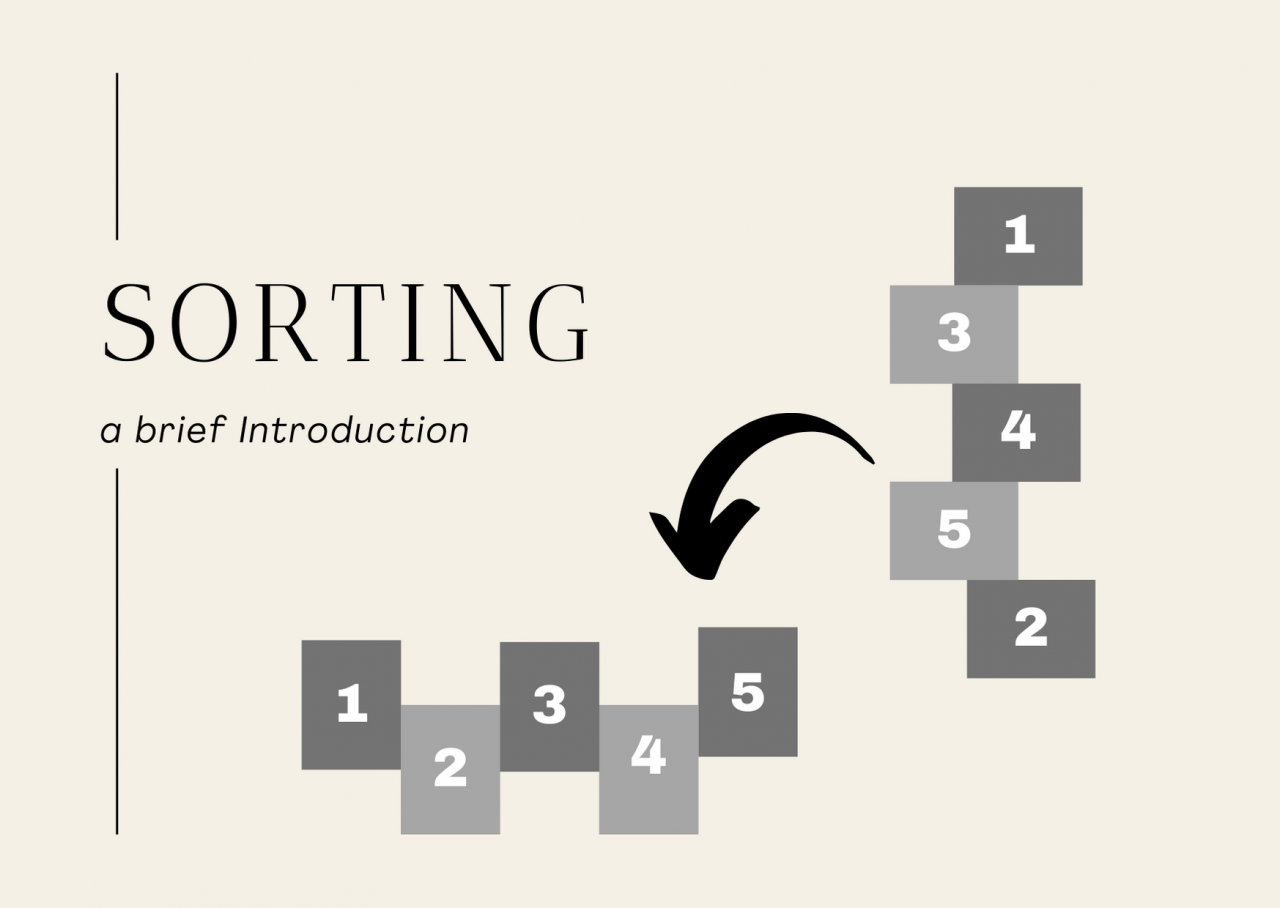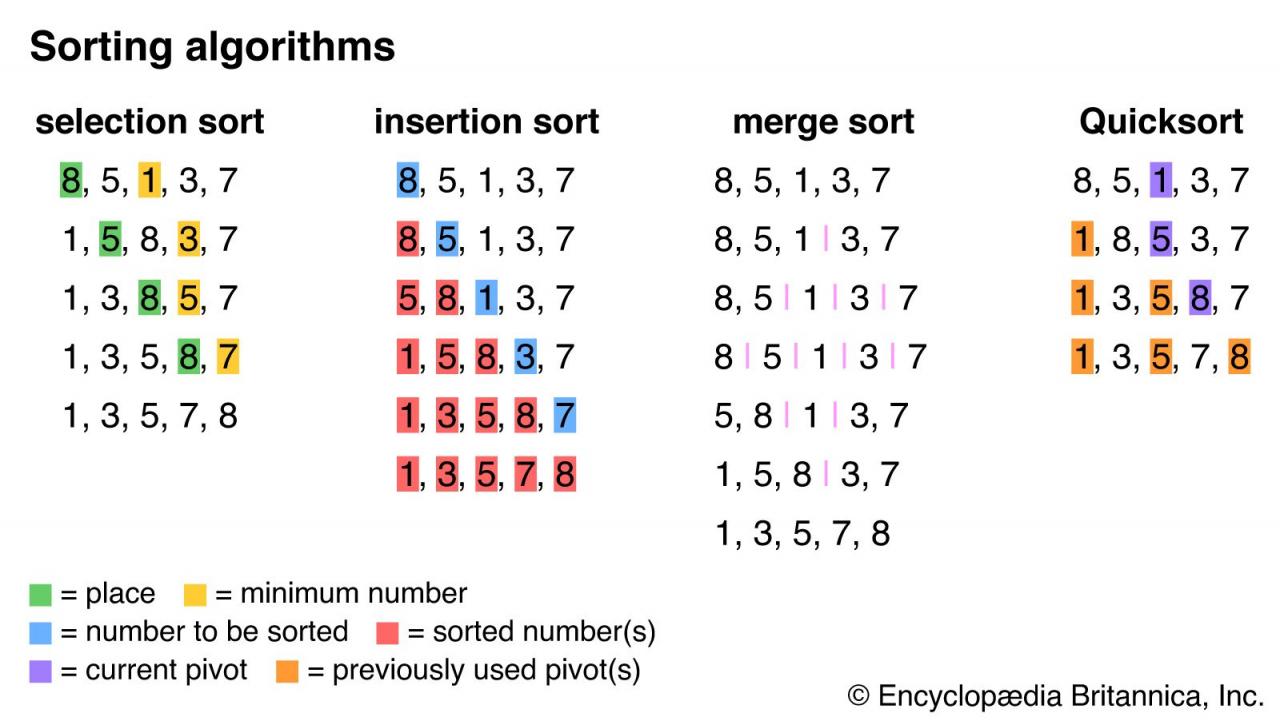
As sort definition takes center stage, this opening passage beckons readers into a world crafted with journalistic flair and a news-like tone, ensuring a reading experience that is both absorbing and distinctly original. The precise definition of “sort” will be our guiding light, as we delve into its synonyms and antonyms, and explore how it’s used in everyday language.
Beyond the basic understanding, we’ll embark on a journey through the diverse types of sorting algorithms, their applications, and their impact on efficiency and accuracy in various fields. Real-world examples will illuminate how sorting plays a crucial role in data management, computer science, and even our daily lives.
Definition and Meaning: Sort Definition

The term “sort” refers to the process of organizing data in a specific order. It involves arranging elements in a sequence based on a defined criterion or key. Synonyms for “sort” include “order,” “arrange,” and “classify.” Antonyms include “disorder,” “jumble,” and “mix.”
For example, we can sort a list of numbers in ascending order (from smallest to largest) or a list of names in alphabetical order. Sorting plays a crucial role in various fields, including data management, computer science, and everyday life.
Types of Sorting, Sort definition
There are numerous sorting algorithms, each with its own strengths and weaknesses. Some common algorithms include:
- Bubble Sort: Compares adjacent elements and swaps them if they are out of order. Simple to implement but inefficient for large datasets.
- Selection Sort: Finds the minimum element from the unsorted portion and swaps it with the leftmost unsorted element. Also inefficient for large datasets.
- Insertion Sort: Builds the sorted list one element at a time by inserting each unsorted element into its correct position in the sorted portion.
- Merge Sort: Divides the list into smaller sublists, sorts them recursively, and then merges them back together. Efficient for large datasets.
- Quick Sort: Selects a pivot element, partitions the list into two sublists, and recursively sorts each sublist. Efficient on average, but worst-case performance is poor.
The choice of sorting algorithm depends on factors such as the size of the dataset, the nature of the data, and the desired time and space complexity.
Applications of Sorting
Sorting finds applications in various industries and domains, including:
- Data Management: Organizing and retrieving data efficiently in databases and data warehouses.
- Computer Science: Searching, indexing, and processing data structures such as arrays and linked lists.
- Everyday Life: Sorting emails, organizing files, and managing inventory.
Sorting algorithms play a critical role in ensuring the efficiency and accuracy of data processing tasks.
Implementation and Optimization
Sorting algorithms can be implemented in various programming languages. Here’s a simple example of bubble sort in Python:
def bubble_sort(arr): n = len(arr) for i in range(n): for j in range(0, n-i-1): if arr[j] > arr[j+1]: arr[j], arr[j+1] = arr[j+1], arr[j] return arr
To optimize sorting performance, consider the following techniques:
- Choose the appropriate sorting algorithm based on the dataset and requirements.
- Use optimized data structures such as balanced binary trees or hash tables.
- Parallelize sorting operations if possible.
By optimizing sorting algorithms, you can significantly improve the efficiency and scalability of your data processing applications.
Last Word

In conclusion, sort definition is not merely a technical term but a fundamental concept that underpins the organization and manipulation of data. Its applications are vast and its impact profound. As we continue to generate and consume ever-increasing amounts of information, the ability to sort and order it effectively becomes more critical than ever before.
Popular Questions
What is the simplest sorting algorithm?
Bubble sort is the simplest sorting algorithm, which compares adjacent elements and swaps them if they are out of order.
What is the most efficient sorting algorithm?
Merge sort and quicksort are generally considered the most efficient sorting algorithms, with a time complexity of O(n log n).
How can I improve the performance of sorting algorithms?
Techniques such as using optimized data structures, choosing the appropriate algorithm for the specific data set, and implementing multi-threading can improve sorting performance.